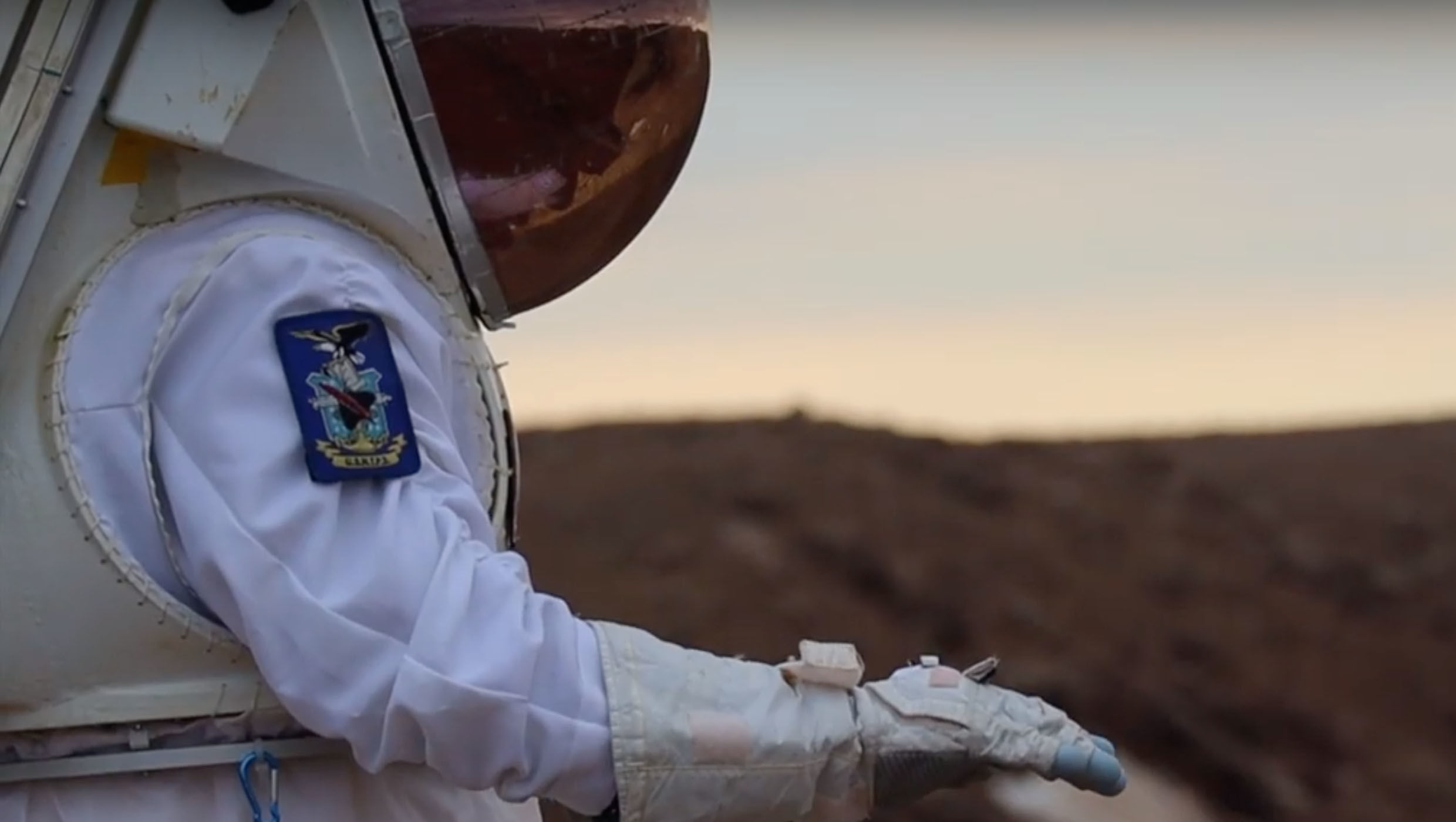Create a free profile to get unlimited access to exclusive videos, sweepstakes, and more!
This ultracool smart glove for astronauts is like a remote control for robots on the Moon and Mars

What if astronauts could take a spacecraft to Mars or some other alien planet and, without ever flying through a toxic atmosphere or landing on an inhospitable surface, control drones and rovers to unearth things that would be otherwise impossible to get up close to?
This is the thinking behind the Ntention smart glove. Ntention is an ambitious futuretech startup that was the brainchild of Norwegian University of Science and Technology (NTNU) students who wanted to push the limits of space exploration. They designed this glove, equipped with sensors, as a human-machine interface that lets you mind-control a robot with hand gestures. Now NASA’s Haughton Mars project (HMP) has field-tested the glove and found it to be many levels of awesome.
HMP, part of NASA’s Ames Research Center, pulled off the successful field test in collaboration with Mars Institute, Collins Aerospace, and the SETI institute (because alien hunting may mean sending robots where humans would perish). Earthlings can only go so far in an environment clearly not designed for our bodies. Mars is a freezing, sun-blasted desert. The Moon can go from scorching days to glacial nights on the side that actually gets sunlight. While spacesuits are constantly being upgraded, even the most advanced protective tech may not be enough for exploring certain areas of Mars or the Moon.
“A smart glove-equipped spacesuit could be a solution,” said Dr Pascal Lee, director of the NASA Haughton-Mars Project at NASA Ames Research Center and a planetary scientist with the SETI Institute and the Mars Institute. “With it, astronauts could easily control a range of robotic assets, making science and exploration operations on the Moon, Mars and at other destinations more effective and productive.”
Because HMP is located on the Houghton meteorite impact crater on a remote Arctic island, which is just about as close to Mars as you can get on Earth, it was an ideal place to try the smart glove out. You would think that someone wearing this while operating a rover from miles away is performing some sort of magic. The micro-controller in the glove reads a variety of sensors, which are so hypersensitive that they pick up even the subtlest motions. These sensors wirelessly zap the same motions to a mobile device attached to the robot in question, telling it when and how to make its next move.
The glove also features adjustable hand motion sensitivity that works with notoriously stiff pressurized spacesuits. Maybe it could be put to work with the hands-free rover NASA is planning to send to the Moon, since it basically turns a human hand into a remote control.
Fast-forward past the Moon and Mars for a second. If humans ever venture to somewhere like Titan or Europa on a mission to search for aliens, they won’t have to dive into toxic methane lakes or a freezing subsurface ocean. Imagine sitting in front of a screen and looking through the “eyes” of a robot swimming through Europa’s dark waters. Say you see a rock. By moving your own hand as if you’re picking up that rock, the robot does the same to see what may or many not be crawling under it.
Maybe it could hang on to the rock and put it in a storage compartment for further study on Earth. Astronauts will eventually be able to perform such tasks from the safety of a habitat or spacecraft. Don’t forget drones. While NASA is considering the possibilities of exploring Venus, even creating a habitat that won’t be affected by the planet’s intense heat or sulfuric clouds, parking your spaceship in a safe zone and guiding a drone through that poisonous atmosphere might be a better idea. An environment that extreme isn’t the only reason drones will be invaluable to space exploration.
“Astronauts on the Moon or Mars will want to fly drones for various reasons,” said Lee. “For instance, to collect a sample that is out of reach or that needs to be isolated from contamination. Or to assist in a search and rescue operation…robotic flyers might assist astronauts in a variety or science and exploration tasks, including surveying, mapping, sampling, scouting, fetching, and inspecting.”
Ntention’s glove is going to change how we explore the cosmos. The only question left is, where was this contraption for us to run our RC cars into the neighbors’ flower beds when we were kids?
(via Mars Institute)


























